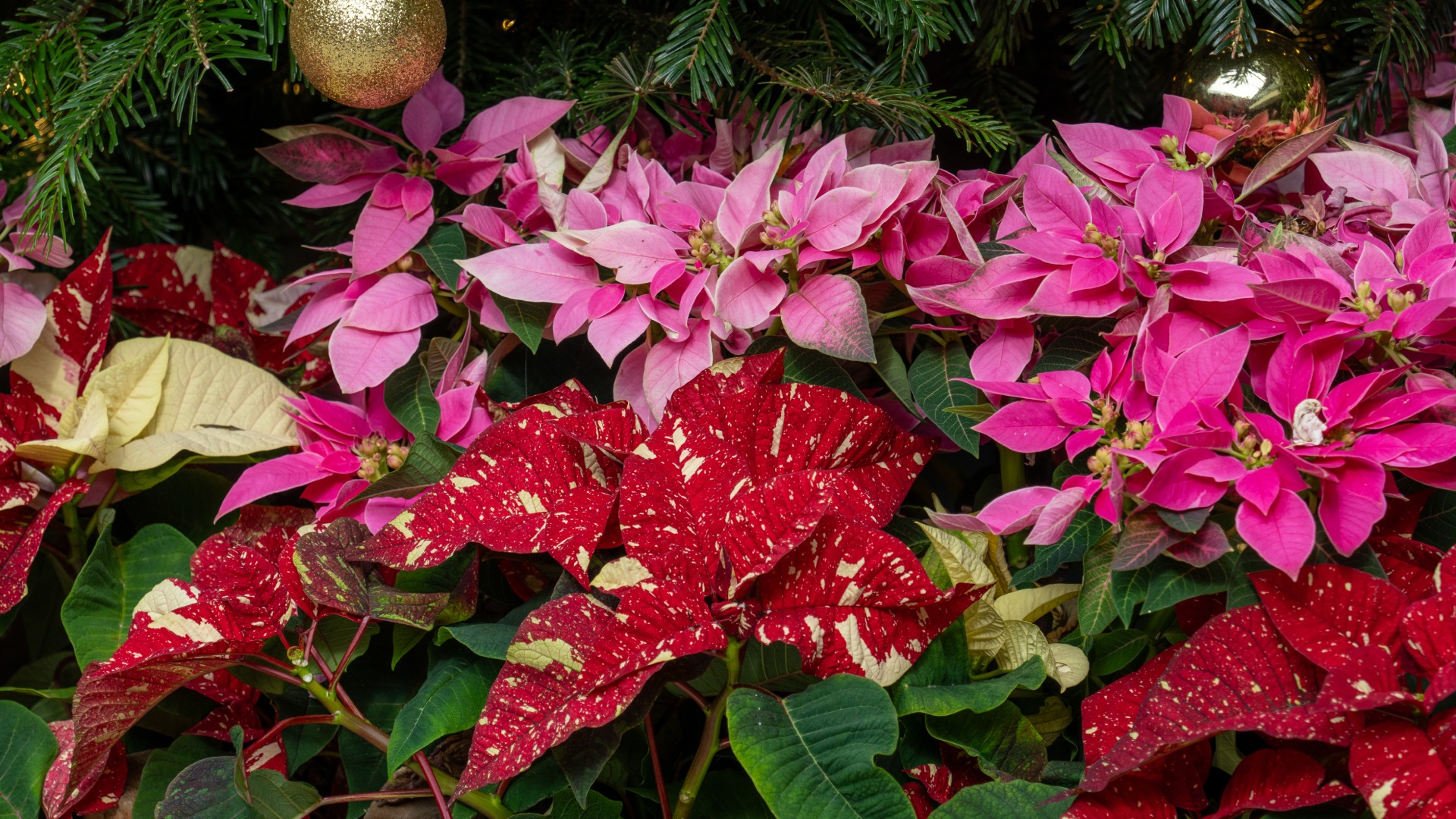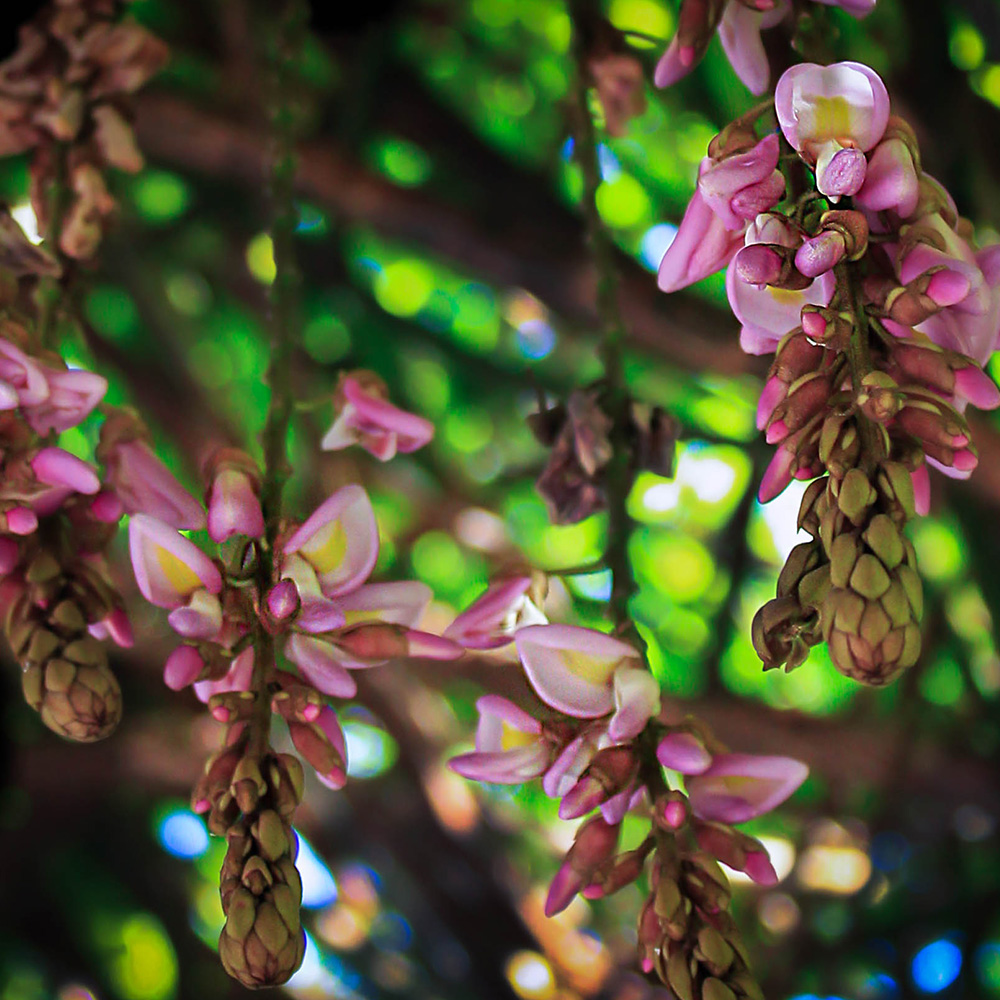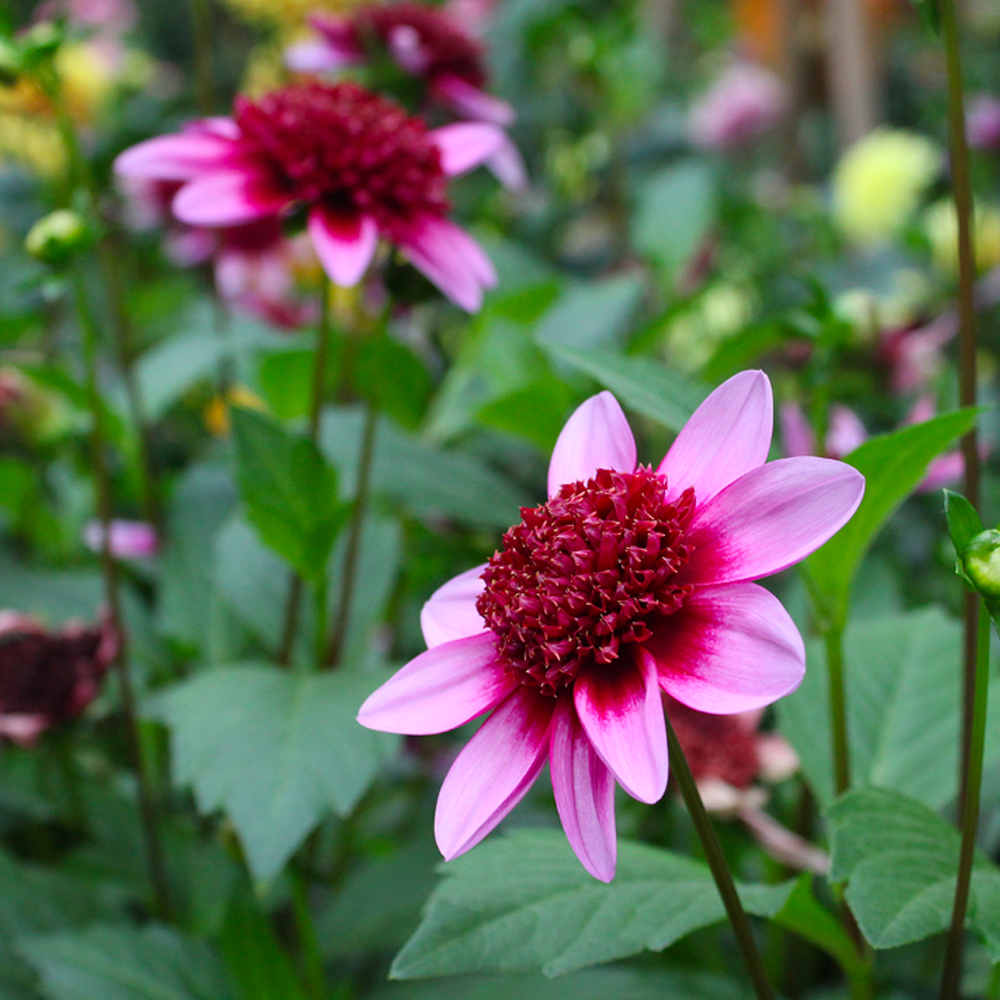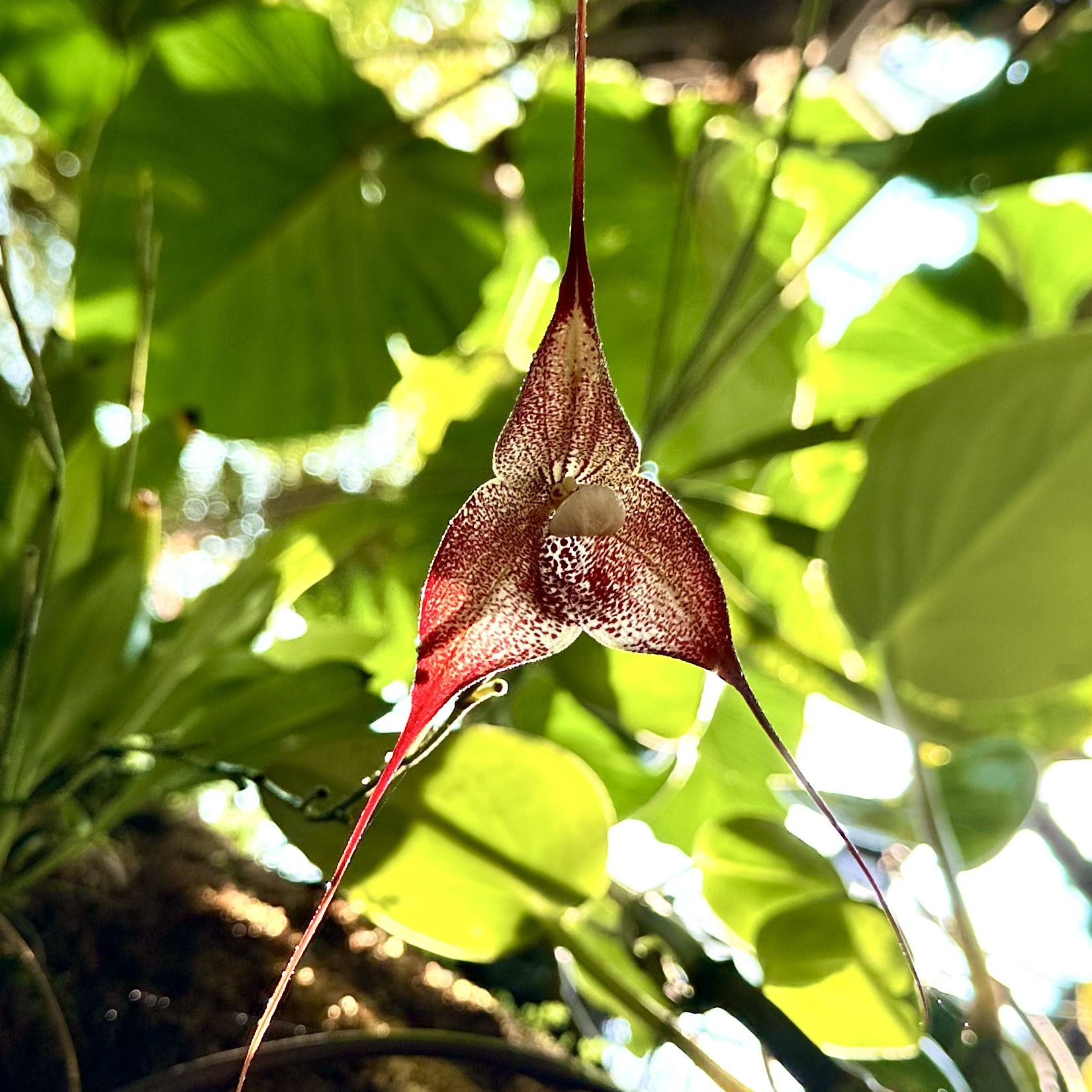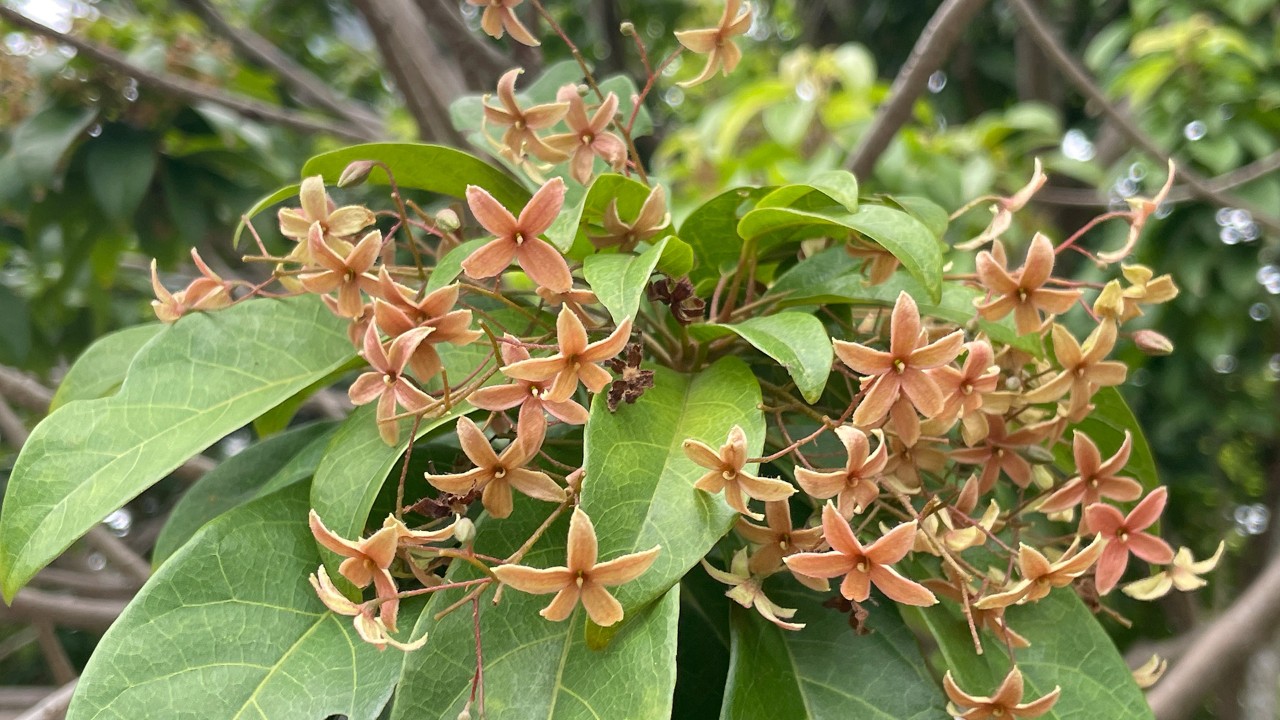
What’s a Christmas-like red and green but sometimes awfully stinky? Meet the Sterculia genus, a member of the mallow or hibiscus family (Malvaceae) that is named for the smelly flowers of some of its 186 species! Apparently, some of the botanists found the flowers of some species in this genus, particularly S. foetida so pungent, that they named the entire genus after Sterculius, the ancient Roman god of manure!
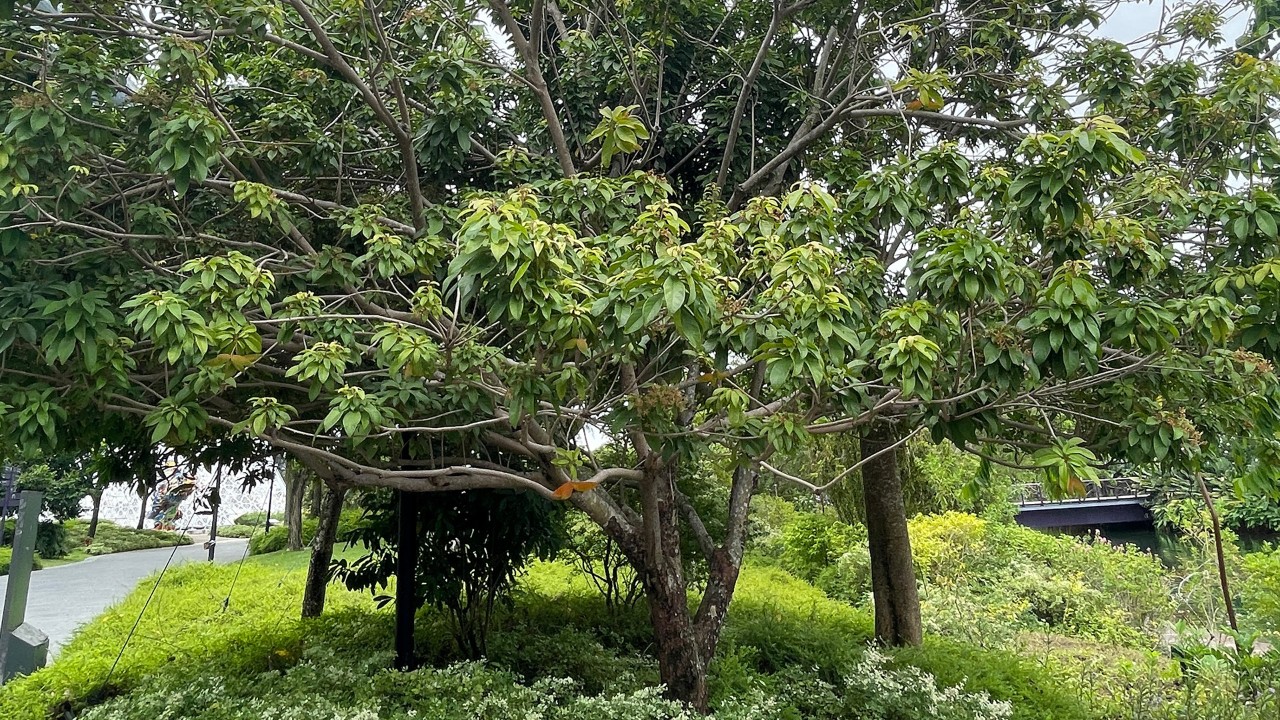 The small pinkish flower clusters on this short tree can be difficult to make out even in full bloom!
The small pinkish flower clusters on this short tree can be difficult to make out even in full bloom!
This particular species of Sterculia has the widest native distribution of its genus, ranging across South and Southeast Asia, from Assam, India, all the way east to Southeastern China, and south through Malaysia, and is found in the lowland near streams to an altitude of 1600m, in hilly evergreen forests. A shrub to short tree up to 3-4m in height, this evergreen tree bears light-green lance-shaped leaves – hence its specific epithet lanceolata, referring to the shape of the relatively narrow leaves that taper to a point at one end.
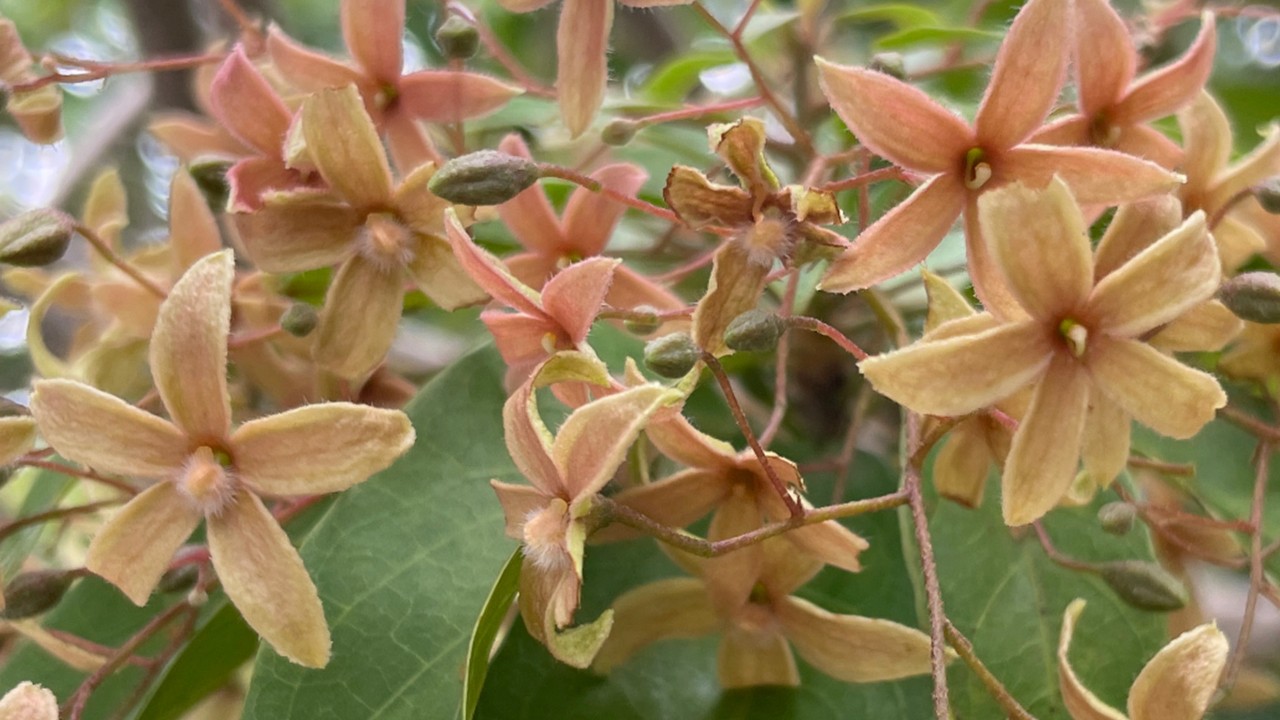 S. lanceolata bears female (far left, with central, mature, hairy carpels) and male (far right, with undeveloped central carpels) flowers on separate inflorescences (flower clusters).
S. lanceolata bears female (far left, with central, mature, hairy carpels) and male (far right, with undeveloped central carpels) flowers on separate inflorescences (flower clusters).
Unlike the famously foetid flowers of S. foetida, S. lanceolata bears small reddish-yellow flowers about two cm in diameter with no remarkable scent. Borne in dense panicles – many-branched flower clusters - each panicle is composed of either male or female flowers. Despite their neat five-petaled appearance, neither male nor female flowers possess petals; instead, the petal-like structure is actually the calyx or fused sepals of the flower, which take on the pollinator-attracting function of the petals. Most species of Sterculia are pollinated by flies or beetles, attracted to the slightly foetid flower aroma, but the identity of the pollinators of this species remains a scientific mystery. If you visit our trees and spot any possible suspects, do let us know!
After these mystery pollinators do their jobs, successfully pollinated and fertilized female flowers develop into clusters of 2-5 follicles, hard, woody, beaked structures that are green when immature, ripening to a bright red and splitting open to reveal dark, round seeds about 1cm in diameter, hanging alluringly from the split follicle edges.
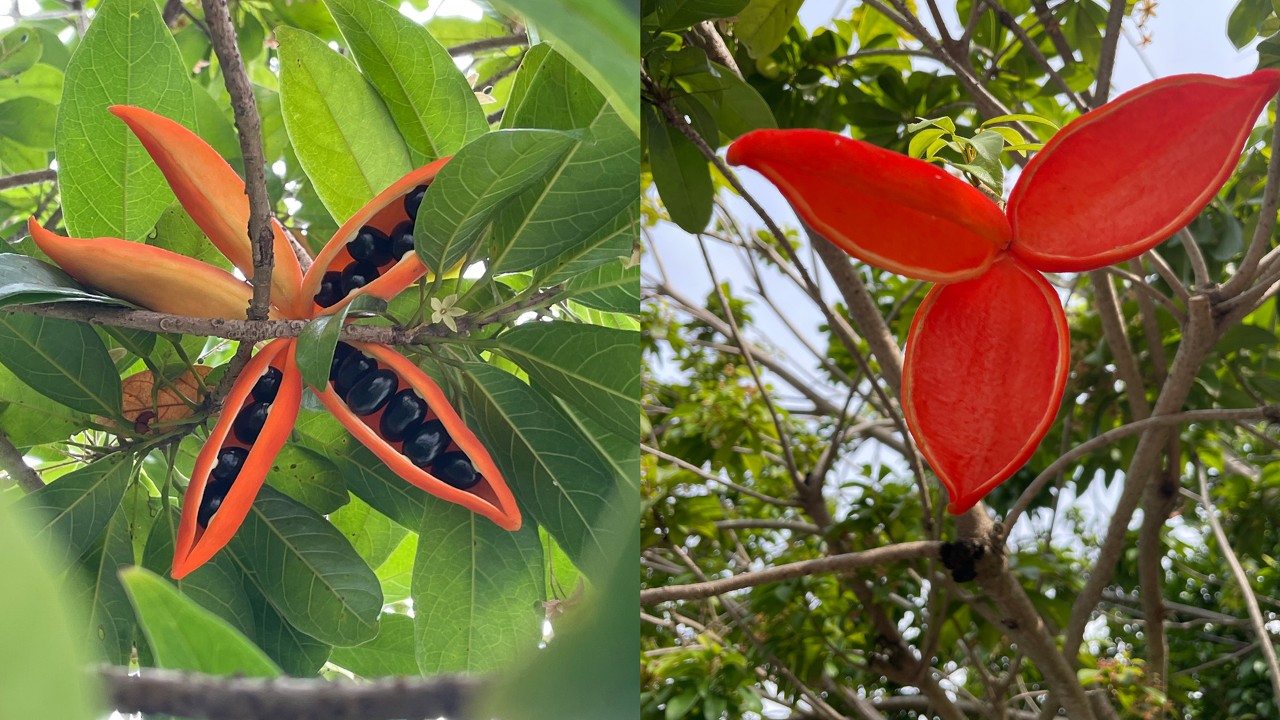 The ripening, orange, dry fruits, called follicles, split along a central seam to reveal the hard, black, seeds within (left). The fully-ripened red follicle is as eye catching to birds as it is to humans and has likely been plucked clean of its seeds by koels or yellow-vented bulbuls (right).
The ripening, orange, dry fruits, called follicles, split along a central seam to reveal the hard, black, seeds within (left). The fully-ripened red follicle is as eye catching to birds as it is to humans and has likely been plucked clean of its seeds by koels or yellow-vented bulbuls (right).
As noted by botanist and mycologist E.J.H. Corner (1906-1996), a former Assistant Director of the Singapore Botanic Gardens, in his book ‘Wayside Trees of Malaya', Sterculias were one of several trees, shrubs, and lianas which shared the name tangisong burong, meaning ‘crying birds’. This is an old Malay catch-all name for plants with large, red, fruit attractive to birds, but big, bare seeds, absent of any sweet, fleshy coating like that of lychee (Litchi chinensis) or longan (Dimocarpus longan) and therefore frustrating enough to make fruit-eating birds like hornbills and Asian koels cry! Indeed, koels and yellow-vented bulbuls can often be seen pecking at the seeds of these sterculias but whether they eat and disperse significant quantities of the seeds or just throw them to the ground in annoyance, to be eaten and spread by other animals is another mystery!
Whether to human or bird, flowering or in fruit, the small, but ornamental Sterculia lanceolata can be quite the eye-catching tree! Find two prominent trees with both flowers and fruit flanking the steps down from Scented Walk to Dragonfly Lake, at the far end of Bayfront Pavilion.
Written by: Janelle Jung, Senior Researcher (Research and Horticulture)
A transplanted pake (Hawai'i-born Chinese), she's finding her own Singaporean roots. Every plant has a story, and Janelle helps discover and share these with colleagues and guests, hoping to spark a mutual plant passion! Ask her what plant she named her cat after!
